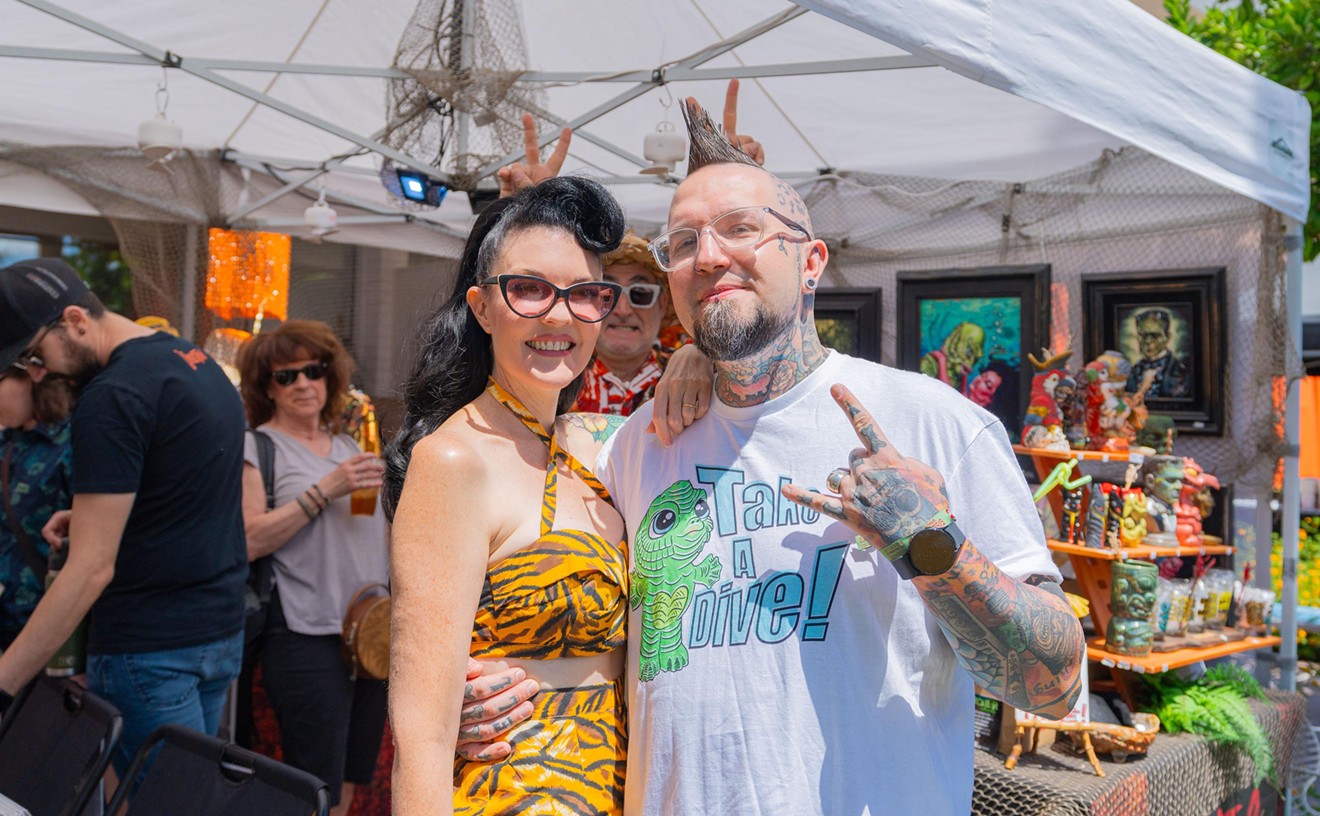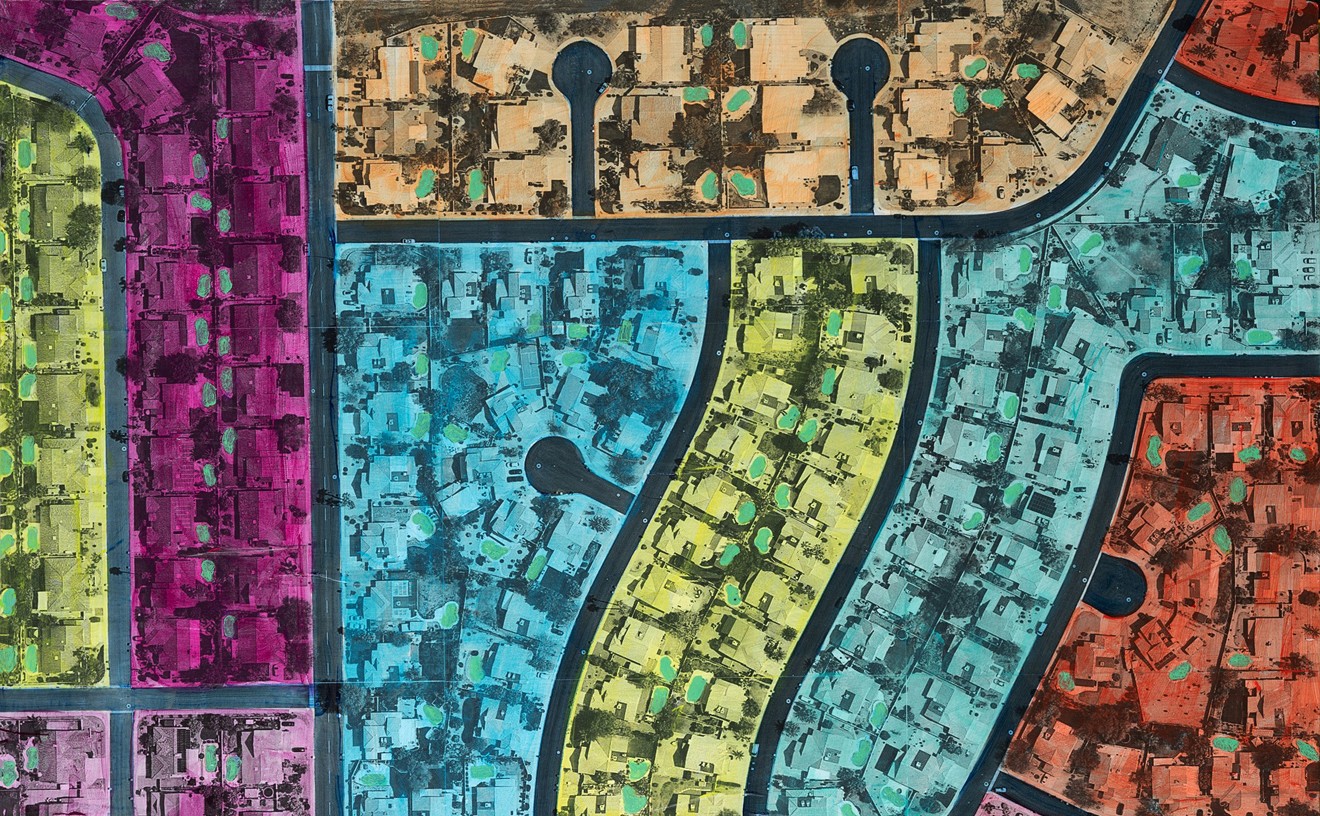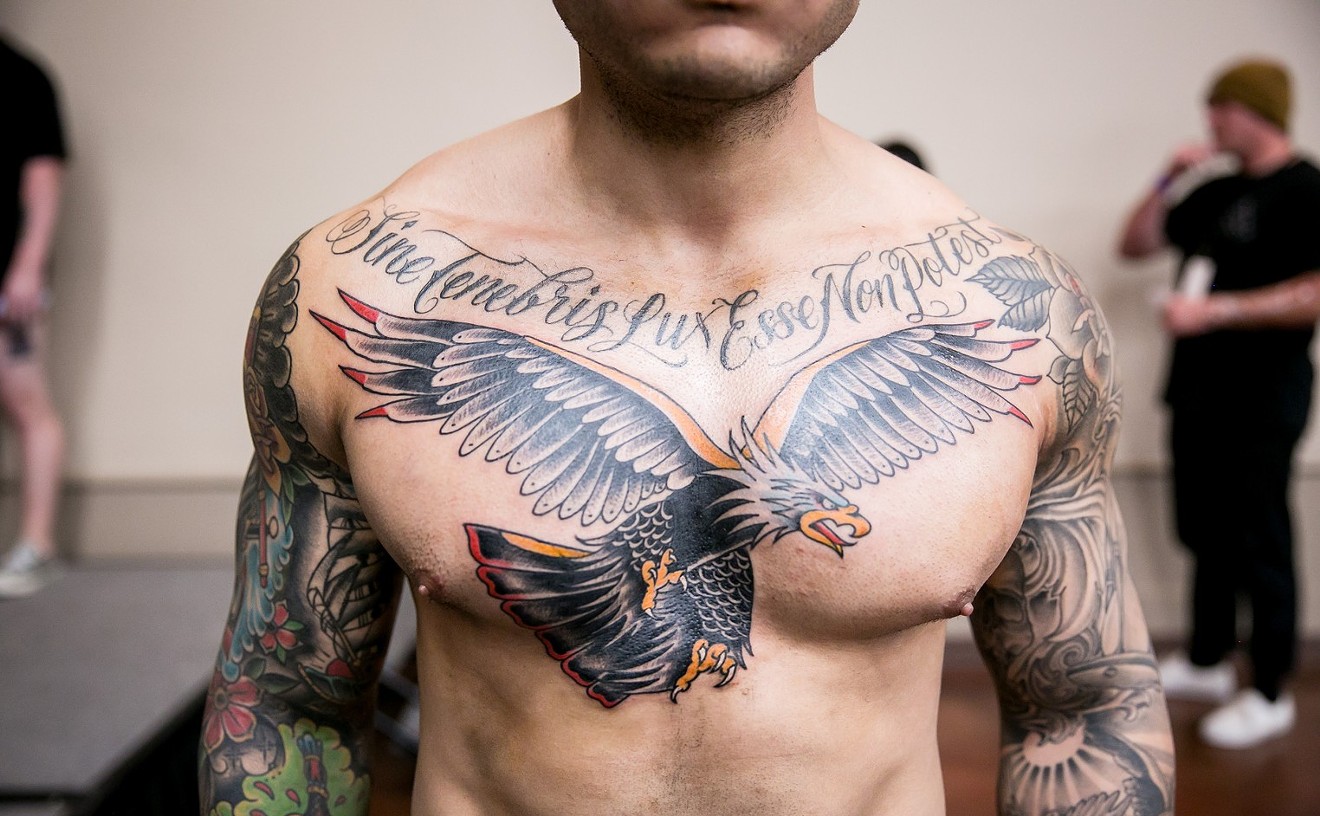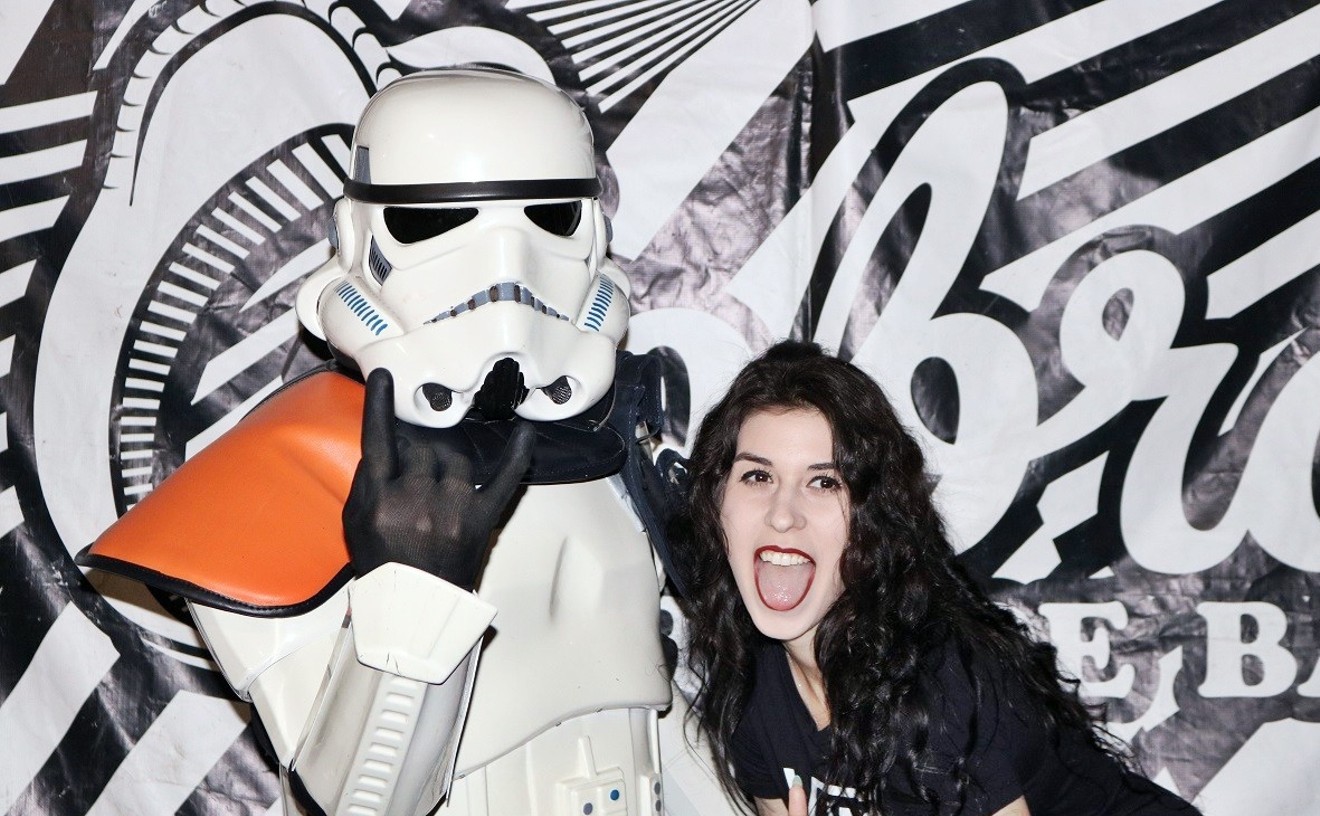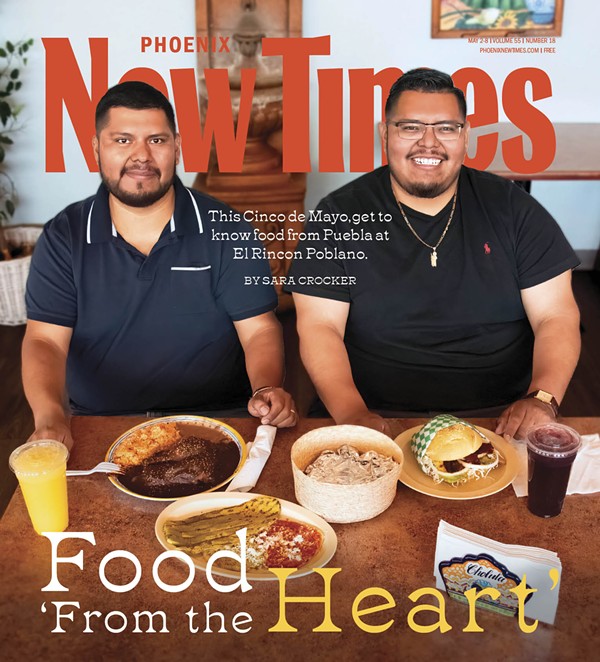Marilyn Zeitlin, curator of the ASU Art Museum, welcomed the noshing audience. "When you came here," she said, "many of you brought your art collections." Gotcha, I snickered (my art collection consisting of a couple of Barry Smith-rendered Conan the Barbarian comics). But that turned out to be the one and only opportunity to snipe.
O'Connor's subsequent presentation more show and tell than lecture was sobering and at the same time thrilling. In making an argument for the artistic force of photojournalism, this event delivered on the promise of the Forkosh Hirshman Art & Society lecture series. Yes, issues both transcendent and profoundly human will be rassled with.
"I believe firmly human beings are social animals and that everything we do has at some level to do with society," says Linda Hirshman, who, with husband David Forkosh, forked over the funds for the series. "If you make art, you are either a harbinger or a forecaster of social change. Or you are reflecting it, or you're actually making it happen. It's very rare to find art that is completely disconnected from social relationships."
Hirshman, a revved-up presence on a podium, is a former philosophy professor and lawyer. Forkosh, the CEO of the FMH Foundation, is a doctor. "Now that I've retired from philosophy," Hirshman says, "I don't want to give up my role of helping broaden the discourse and give people categories of understanding."
As for selecting a newspaper veteran to be the first representative of these ambitions, Hirshman says, "To my way of thinking, the photo editor of the New York Times has shaped our understanding of the last two years' events more fully than any other person in the country from an art standpoint." It may be an overstatement of the Times' power out here in the desert, but O'Connor made a good supporting argument for it.
Not that O'Connor was an exceptional speaker. There are other thinkers who make bolder claims for the uncomfortable beauty and troubling power of wartime photos. (See Susan Sontag's just-published Regarding the Pain of Others.) But then the modest O'Connor didn't have to dazzle. Or disturb. Stephen Crowley's photo of Afghan refugee Jamilah draped in an olive burqa her baby daughter peering over her shoulder into the camera does that. Another photo, again by Crowley, does it evocatively. A loose knot of Afghan men stand on a dusty plain; behind them, a B-52 bomber etches a contrail lasso in a blue sky.
Amid the winning breaking-news photos, there was the requisite shot of the World Trade Center towers pierced and bleeding fire and debris. But more than a year and a half later, other photos stood out. There is a photograph of one of the towers with a huge gouge in it. In the dark maw stands a man, doomed. In an impromptu portrait shot by Angel Franco, two women stand on the street watching. One leans on a kiosk. Her hand covers much of her face, but her mouth is turned in just such a way that we know she's crying. The woman in the foreground stares upward: Tears are pooling, her hand is balled up over her mouth. Her eyeglasses catch the faint reflection of the manmade disaster. O'Connor's personal favorite is by staff photographer Edward Keating. His is a simple photo of a tea set covered with dust and ash. The muted beige, the way the china sits just so it is undeniably elegant. The caption reads: "Inside the Williamson family apartment on Cedar Street, across from the South Tower," but really it could be called still life from a modern-day Pompeii.
The newspaper as an art gallery. Or a Web site as a museum (see the prize winners at Pulitzer.org). As Zeitlin said the next night at ASU's Neeb Hall, the time for museums to be prissy storehouses is slipping by. The slide show was a potent reminder that in the days and weeks after 9/11, photojournalism outmaneuvered the written word time and again. In its speed and immediacy, it did the paradoxical: It slowed down time; it articulated the unspeakable.
Artist Sue Coe would argue that is precisely what art does. "Making art is the opposite of making war. It is about slowing time down, not speeding it up," she writes in her artist statement for "The Tragedy of War," a series of dark, passionate, opinionated prints on display at the ASU Art Museum through May 31. Coe will be giving a lecture this Friday.
The juxtaposition and timing of O'Connor and Coe is nearly perfect. Although Coe writes in her artist statement about the events of 9/11, her work was created in 2000. And unlike the Times photos' claims of "objectivity," Coe's work is resolutely anti-war. (Zeitlin and Hirshman will give a lunchtime lecture at noon April 4, on yet another class of works engaged with war, "The Big Shift: Art and Ideas in the Aftermath of the Second World War.") In Coe's And the Dogs Howled, a man stares out at the viewer. Behind him is what looks like a mass grave. One of his hands hangs limply at his side; the other is drawn over his mouth and nose. The stench of battle and a speak-no-evil secrecy permeate the scene. "Is it even necessary," Coe asks, "to say war, any war, should be opposed?"
You don't have to agree with Coe's rhetorical question it's too easy. But you have to appreciate that her lecture and the Forkosh Hirshman Art & Society series are asking vital questions at a dire time.





